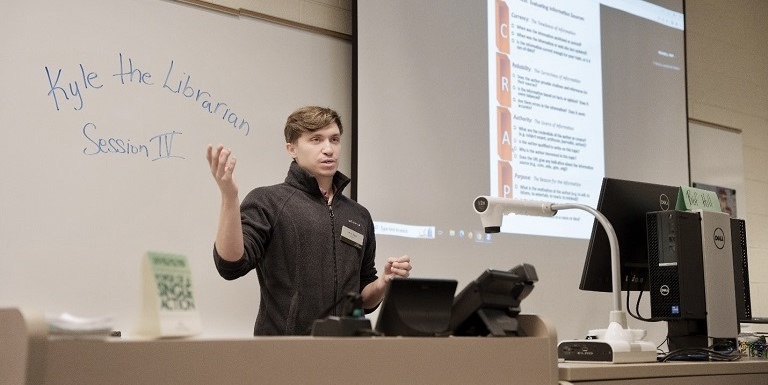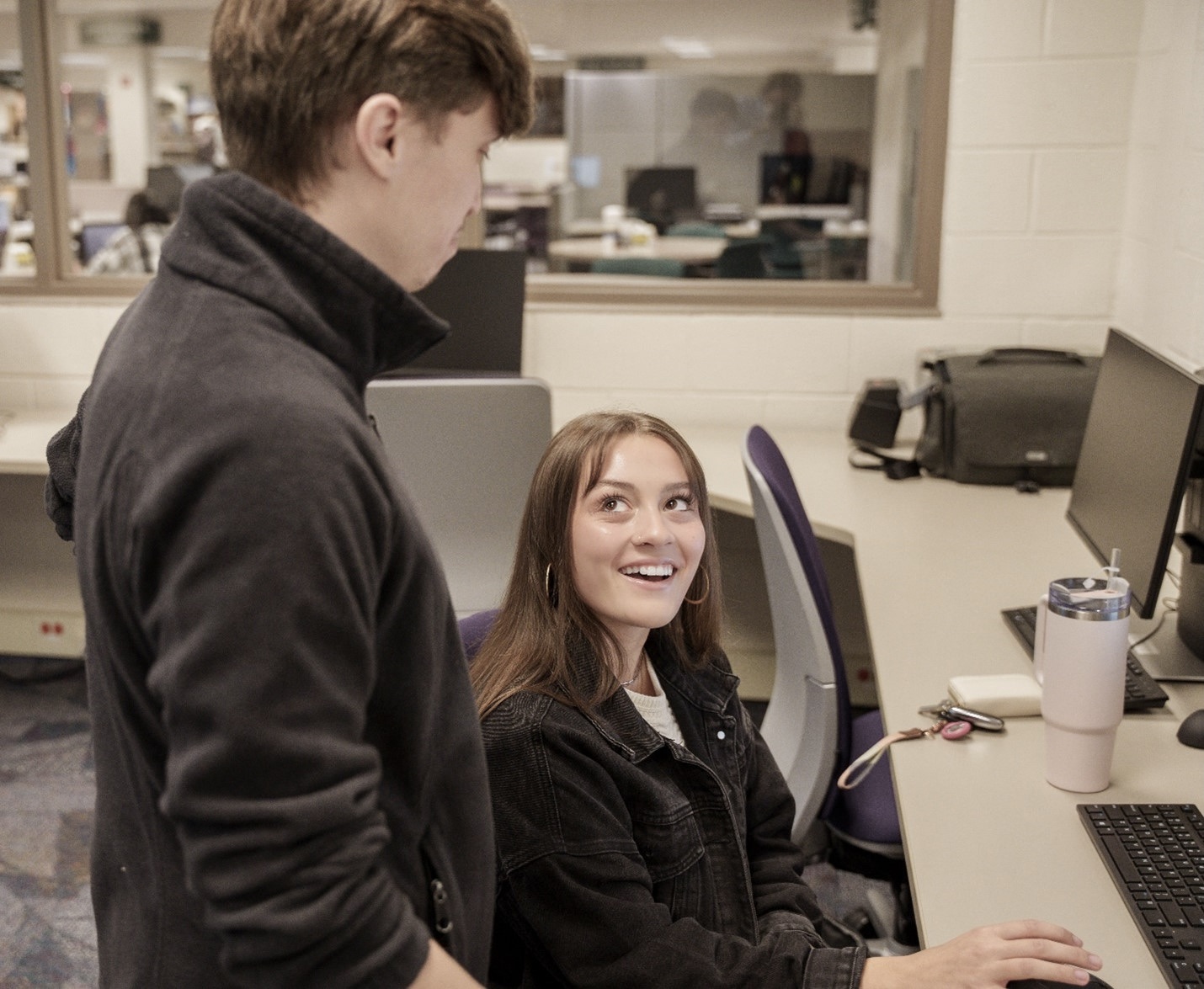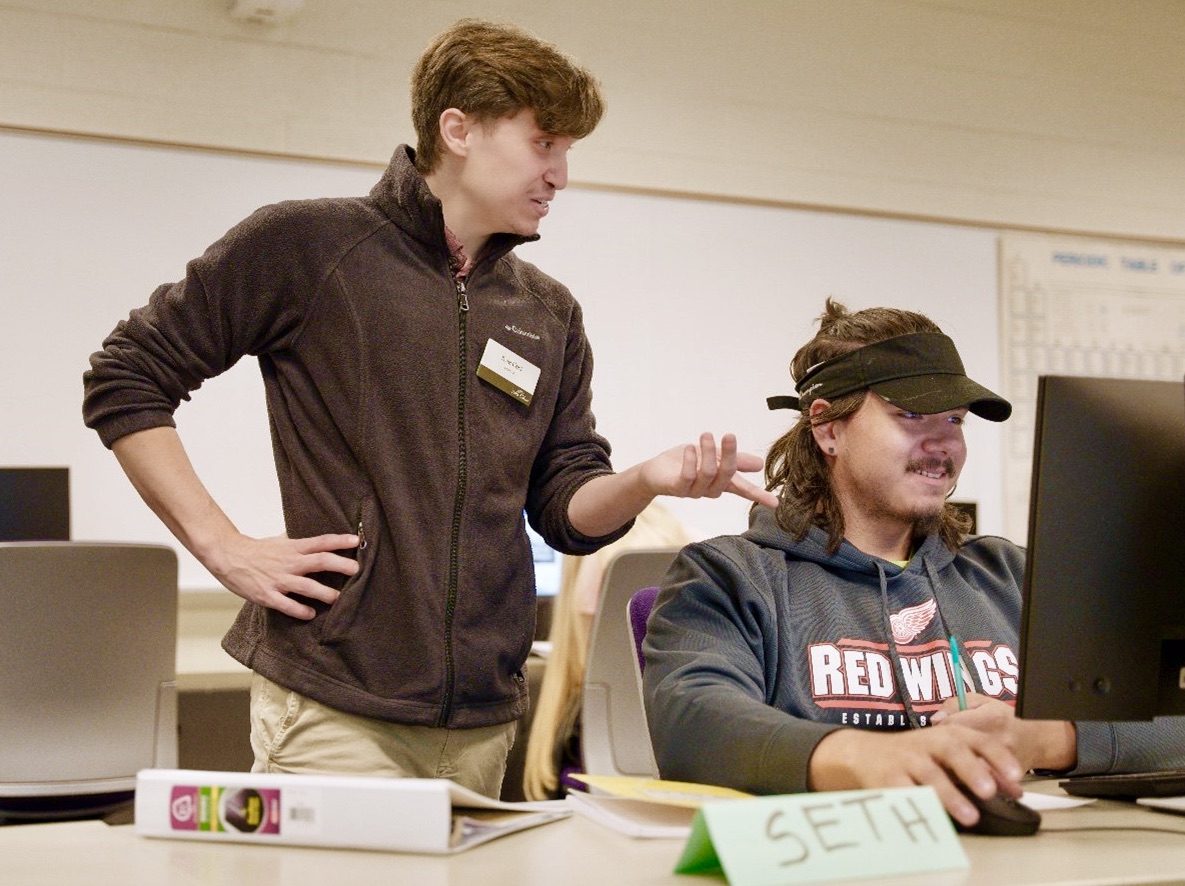Beyond One-Shot Instruction: Reimagining Library Classroom Experiences

Malcom X (n.d.) once said that “education is the passport to the future, for tomorrow belongs to those who prepare for it today” (para. 2). In the age of information, research has become a key part of that passport to the future. Today, Americans exist in an information-rich world where they often feel overwhelmed. The Pew Research Center found that 35 percent of American adults are interested in improving their research abilities, but express concern about their skills to do so on their own (Horrigan, 2017). The same study showed 49 percent of Americans to be doubtful or wary of their information sources. We may not be able to solve this issue for all Americans, but community college libraries have a key role to play in improving our students’ research competency.
Many students who enter college have little understanding of what a library is or how to conduct research. According to the Center for Educational Performance and Information (2022), K-12 schools in the state of Michigan alone have lost 46 percent of their full-time equivalency (FTE) librarians since 2009. Across the U.S., the National Center for Education Statistics (2021) shows a loss of 14,799 K-12 FTE librarians since 2000. Furthermore, a generation of students had even less access to research professionals in the K-12 system due to the COVID-19 pandemic, yet we expect them to utilize libraries with which they have no connection or experience.
The traditional method for preparing students for academic research, and as lifelong learners, has been sadly lacking. We have spent years giving students roughly one hour of library instruction in a handful of first- and second-year courses. This format, often referred to as one-shot library instruction, provides very little time for students to understand the more complicated and nuanced nature of research. This criticism of one-shot instruction is not new and has been commented on by many academic librarians (Vossler et al., 2023). Many instructors are likewise frustrated by these sessions, during which there is not time to address the exponential growth in ways that information can be accessed. Additionally, instructors are subject matter experts who may not always be able to keep up on the latest research tools offered by the library. The program highlighted in this article—Research Bootcamp—is one solution for how community college librarians can help solve the issues faced by our students in an ever-expanding world of information.

Ceci discusses the research process with a student.
Research Bootcamp
One of Delta College’s English professors, Denise Hill, came to the library with an interest in changing the library instruction her second-semester composition students had been receiving. We partnered to create a new program that would replace the one-shot option, which was steadily failing to capture wide faculty support. Our goal was to scaffold the process of research for students over a longer format. The collaboration took the form of four one-hour instruction sessions spread out over four weeks. In each of these sessions, the librarian introduces a different aspect of research.
Session One: Introduction to the Library
This session focuses on the basics. We scaffold the process by placing the library at the center as the inception point for research. Understanding that our students are unlikely to have used the library for academic research, if at all, students learn about what libraries are and the role of librarians in research, access the library website, take a tour of the physical library, and use the online catalog to find a book. Their assignment for this session is to look up a book, locate it in the library, check it out, and bring it to class. After the librarian leaves, the instructor facilitates an activity related to citations and how to analyze books as sources. The goal of this session is for students to understand how the library works and what authority librarians have as professional researchers.
Session Two: Introduction to Research and Searching
This session focuses on how and where students should start their research process. We begin with choosing and narrowing down a topic, generating keywords, and understanding Boolean logic. Students learn how to build their research question as they conduct initial research. At this point, we also introduce them to various types of search operators and filters. The students are given a research log to help them keep track of their key terms, places searched, and information used. They are then tasked with finding one journal or magazine article. The goal of session two is to spark their thinking about the search and how they might find articles that are relevant using the library’s databases.
Session Three: Engagement With Sources
Since many students picked dense academic journal articles in session two that they may never actually read, the third session’s discussion focuses on what academic journals are and why students might use them instead of other source types. We also discuss the source types they are permitted to use as well as why and when certain sources may be better choices. This session communicates to students the importance of reading the entire article if they use it, and making sure they select sources they are capable of reading in full. The goal of this session is for students to think about their source requirements and engage with appropriate sources more critically. The assignment is the same as the one after session two, but the librarian engages with students on sources they found in the previous session and works with them to choose sources that are better fits for their research as well as their skill level for understanding the content.
Session Four: Internet Research/AI
The final session focuses on a topic that, while useful for academic research, is also useful for lifelong learning. Internet research is the main choice for most of our students, whether we like it or not. Instead of fighting this, we try to show them how to use the Internet in a constructive manner. This cuts down on blatant plagiarism and ultimately saves students a great deal of time by searching smarter. This session looks at source analysis through the Currency, Reliability, Authority, and Purpose (CRAP) and the Stop, Investigate the source, Find better coverage, and Trace claims to original sources (SIFT) tests; a Wikipedia review; and a website assessment exercise. The website assessment exercise consists of students evaluating two websites, one reliable and one unreliable, using both CRAP and SIFT, and reporting on which one is the reliable source. Any two websites can be used, but for our session, we used two from a Stanford experiment that tested students’ fact checking skills (Wineburg & McGrew, 2017). The students are then tasked with finding a reliable website related to their research while filling out a CRAP form to show why their source is credible.

Ceci points out information to help a student analyze a source.
Results
As a result of this program, we have seen increased interest in and more positive attitudes toward research from students. Hill has found that the works cited in many of her students’ final papers are of a much higher quality than before. The return on investment for the time she provides to the librarian is returned to her later in the semester when students work on final research projects, as they are much more confident and competent in their sourcing. In fact, Hill no longer has rules for what sources can or cannot be used because students have learned what ethical, quality research entails and how to assess and defend their source selections. Furthermore, the librarians have noticed an uptick in library usage by students who engage in this type of instruction. After the sessions, for example, a student we worked with who started his research, somewhat obsessively, on a famous athlete, switched to researching Jim Crow laws in the South. Now understanding how to access legal documents, he worked hard to understand the laws, raising his own research bar. Moving away from one-shot library instruction can have this type of effect in community colleges and on students.
The Research Bootcamp program has garnered interest from eight additional English faculty members. We are working with the English department to expand this effort to include asynchronous online classes as well. A second Delta College librarian will join the Research Bootcamp team as the program continues to grow.
References
Center for Education Performance and Information. (2022). K-12 staffing: Additional staffing data files. MI School Data. https://www.mischooldata.org/additional-staffing-data-files
Horrigan, J. (2017). How people approach facts and information. Pew Research Center. https://www.pewresearch.org/internet/wp-content/uploads/sites/9/2017/09/PI_2017.09.11
_FactsAndInfo_FINAL.pdf
Malcom X. (n.d.). About Malcolm X. Malcolm X: The Official Website of Malcolm X. https://www.malcolmx.com
National Center for Education Statistics. (2021). Staff employed in public elementary and secondary school systems, by type of assignment: Selected years, 1949-50 through fall 2019. Institute of Education Sciences, Department of Education. https://nces.ed.gov/programs/digest/d21/tables/dt21_213.10.asp
Vossler, J., Horton, J., & Heady, C. (2023). The questionable efficacy of one-shot instruction for first-year students: A scoping review. https://www.ala.org/acrl/sites/ala.org.acrl/files/content/conferences/confsandpreconfs/2023/
QuestionableEfficacy1.pdf
Wineburg, S., & McGrew, S. (2017). Lateral Reading: Reading less and learning more when evaluating digital information. (Stanford History Education Group Working Paper No. 2017-A1). http://dx.doi.org/10.2139/ssrn.3048994
Lead image: Ceci teaches the class about the CRAP test.
Kyle Ceci, M.I., is Reference Librarian, and Denise Hill, M.A., is Professor, English, at Delta College in University Center, Michigan.
Opinions expressed in Innovation Showcase are those of the author(s) and do not necessarily reflect those of the League for Innovation in the Community College.










